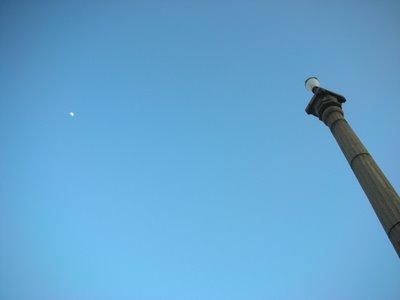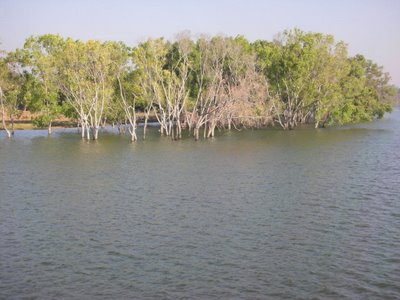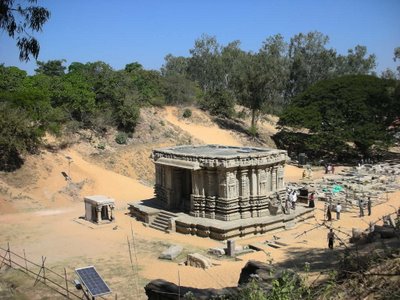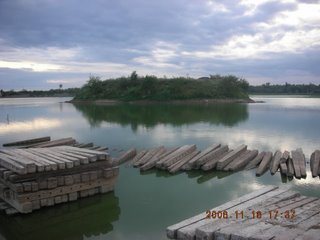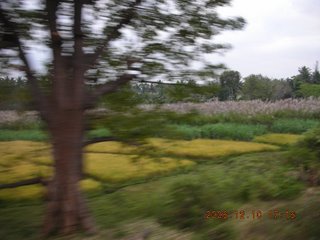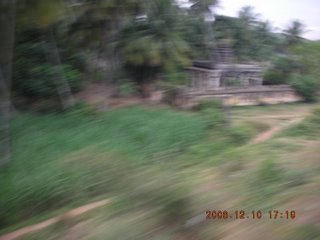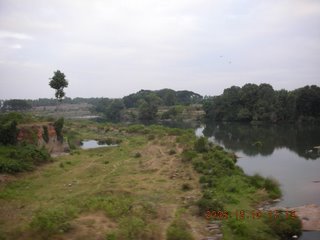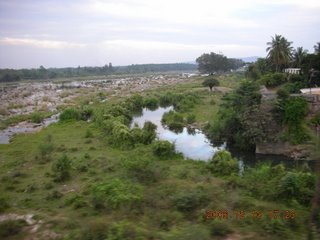Pattadakal is 24kms from Aihole and 29kms from Badami, situated on the left bank of the river-Malaprabha. Pattadakal a world heritage centre has 10 major temples representing early chalukyan architecture.

Although rainy season a clam river that conceals more than it reveals. The grass "lawn" is slightly unkempt, and littered with wild flowers.
# The Galaganatha Temple was built during 750 AD, by Vikramaditya II. The tower of this temple is beautiful.


# Virupaksha Temple - The biggest temple here is deidicated to Virupaksha. Enclosed in a large quadrangle surrounded by small cells, it has a massive gateway and inscriptions. Besides from the Ramayana and Mahabaratha, there is a beautiful carving that would look like an elephant from one side and a buffalo form the other. In front of the temple is a majestic 2.6 metre tall Nandi.In contrast to the pink-tinged sandstone, the Nandi is made of deep green stone and is covered by a red floral cape. The Virupaksha temple is still used for worship.

# The Mallikarkuna and Papanatha temples are delicately carved and rich in details. The Papanatha temple is guarded by Nandi and Virabhadra. There are 16 pillars in themain enclosure. These temples represent chief style of indian architecture and the social life of those days.

In contrast to Aihole were every temple has a tank - a water source, adjacent to it, temples in Pattadakal are on the bank of the river; and on the bank of a lake @ Badami.
Just clicked all I saw into my biscuit sized Nikon. By this time, I had turned spellbound with saturation!
Just clicked all I saw into my biscuit sized Nikon. By this time, I had turned spellbound with saturation!
12/10/2006 - 2:30PM - Banashankari
This was the only place where we saw a crowd waiting to get into to the Temple...Badami was just 4kms away. The temple houses uniquely carved lighiting towers and the biggest tank (which was totally dry).

At Mahakoota again we get to see temples of the Chalukyan tenure. Mahakoota was the centre of Shaivism during the period. The most fascinating is them twin fresh water tanks.

At Mahakoota again we get to see temples of the Chalukyan tenure. Mahakoota was the centre of Shaivism during the period. The most fascinating is them twin fresh water tanks.


































